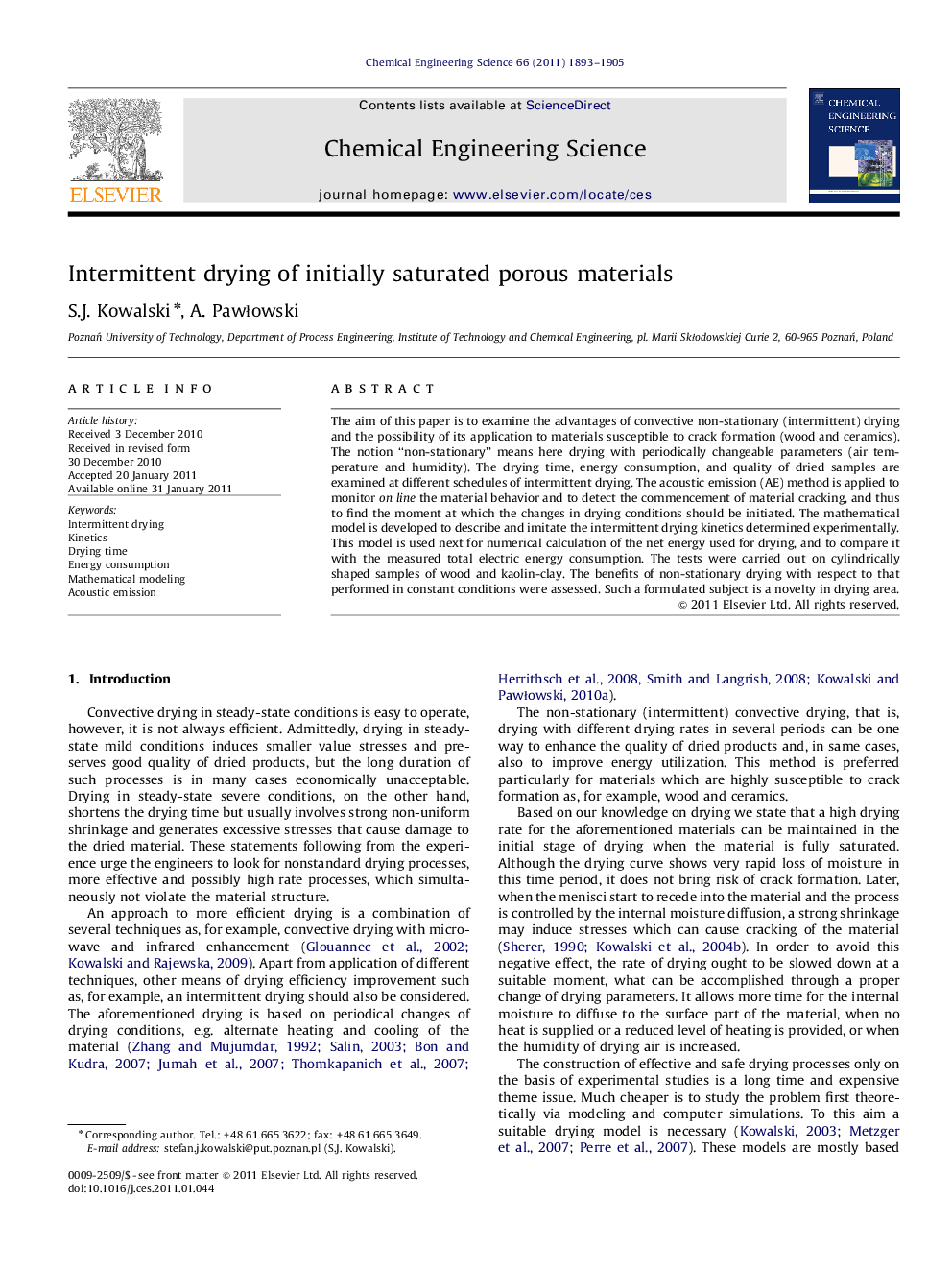| Article ID | Journal | Published Year | Pages | File Type |
|---|---|---|---|---|
| 156312 | Chemical Engineering Science | 2011 | 13 Pages |
The aim of this paper is to examine the advantages of convective non-stationary (intermittent) drying and the possibility of its application to materials susceptible to crack formation (wood and ceramics). The notion “non-stationary” means here drying with periodically changeable parameters (air temperature and humidity). The drying time, energy consumption, and quality of dried samples are examined at different schedules of intermittent drying. The acoustic emission (AE) method is applied to monitor on line the material behavior and to detect the commencement of material cracking, and thus to find the moment at which the changes in drying conditions should be initiated. The mathematical model is developed to describe and imitate the intermittent drying kinetics determined experimentally. This model is used next for numerical calculation of the net energy used for drying, and to compare it with the measured total electric energy consumption. The tests were carried out on cylindrically shaped samples of wood and kaolin-clay. The benefits of non-stationary drying with respect to that performed in constant conditions were assessed. Such a formulated subject is a novelty in drying area.
